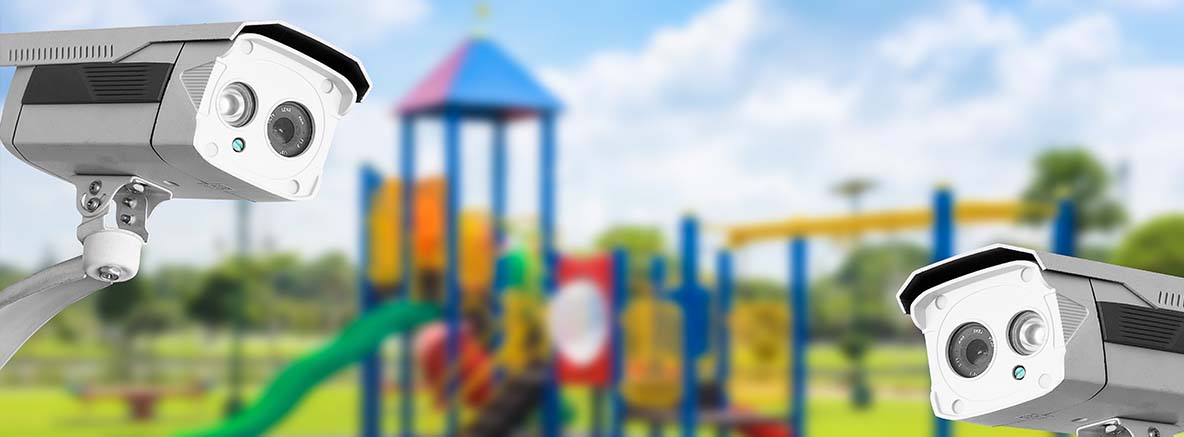How Do I Know If A Neighborhood Is Safe? 4 Ways to Check

House hunting is an exciting phase in the homebuying process. While some buyers search for homes in locations they’re already familiar with, some explore new areas for relocation purposes or to get more square footage for their money. For house hunters shopping in unfamiliar territories, neighborhood safety is a top concern, as choosing the right neighborhood can be just as important as choosing the right home.
The good news is: applying the practical tips in this article can help put your mind at ease about the safety of a potential neighborhood.
4 Ways to Check Neighborhood Safety Before Buying a House
Everyone has a different idea about what is wanted or needed in a neighborhood — e.g., tree-lined streets, nearby shops, and restaurants, high-quality schools, etc. But when it comes to neighborhood safety, almost everyone agrees the safer the neighborhood, the better. Here’s how to assess the safety of a community before you and your family become residents.
1. Identify Common Safety Concerns
Having thoughts about safety is a valid concern. Some top non-violent property crimes include burglaries and vehicle theft. Meanwhile, some top violent crime concerns include assault and robbery.
Thankfully, there are ways to check if you should be concerned based on a bit of research and data.
2. Conduct Research Online
Checking the crime rate in an area before buying a house is easy thanks to the wonder of technology. A number of websites allow potential home buyers to check crime reports online, check neighborhood safety by zip code, or lookup neighborhood information by address. Some of the top websites for this kind of information include:
- CityProtect.com (formerly CrimeReports.com) provides a map of past crimes reported by law enforcement agencies. You can also zoom out for graphs of recent trends.
- SpotCrime.com offers a more user-friendly but less comprehensive alternative. Along with police reports, SpotCrime draws data from news reports and user tips.
- FamilyWatchdog.us features a map with color-coded icons indicating different types of crimes. You can also sign up for alerts about future incidents.
- NSOPW.gov, the National Sex Offender Public Website, is a good resource for neighborhood safety information specific to sex offenders.
- AreaVibes.com provides crime statistics as part of its reporting. The website factors safety into a comprehensive livability score with letter grades for components like crime, schools, cost of living, and more.
- NeighborhoodScout.com uncovers real estate data, demographics, crime data, public school ratings, and trends to forecast appreciation rates based on zip code.
- NextDoor.com is a hyperlocal social media platform. Local businesses and neighbors can post helpful information and news relevant to the neighborhood.
- Moving.com pulls city reports with statistics from the U.S. Census Bureau for population estimates, household income, and median house value.
- CrimeData.com is a website by the Federal Bureau of Investigation (FBI). Filter by state and year and find crime data submitted to the FBI.
- Safewise.com is a resource to find safety resources by state. It includes everything from cameras and internet safety to smoke alarms and fire extinguishers.
- CommunityCrimeMap.com by LexisNexis® is a crime mapping service. By working with and compiling data from law enforcement agencies, the map presents the public with the knowledge needed to stay safe.
- Citizen (app) presents real-time alerts of incidents that happen around your location. See live videos from nearby users.
>> Check out these additional things to research before buying a house.
3. See the Neighborhood Firsthand
Nothing beats driving—or better yet, walking—through a potential neighborhood to get a feel for the area. Try to visit both in the daytime and at night, as the atmosphere can be very different.
- Look out for conditions. Keep your eye out for abandoned storefronts and unkempt landscapes. Research by Harvard Business Review has found a correlation between closed retail stores and crime.
- Participate in a community event. Support the local farmer’s market or community event and see how engaged the community is in local events, which shows their commitment and support of the neighborhood.
- Check who’s outside. Are children walking to school or playing outside? Are people walking their dogs? This can be a sign that parents are ok with their children being outside on their own.
- Thriving local businesses. See if family-owned businesses have been around for many years. This could mean the community cares for their local store owners.
- Trust your intuition. Never underestimate the power of the “gut check” in helping settle questions about safety. Listen to your instincts, as they will guide you in choosing the right neighborhood for you and your family.
4. Ask Around
If you can find someone to talk to within the neighborhood itself, don’t be afraid to strike up a conversation – the information they can share is invaluable.
- Talk to a local real estate agent. A large number of houses on the market could be an indicator of safety. Considering the agent has been serving that particular neighborhood, they may have insight into trends.
- Go to a shop and strike up a conversation. Enter any local business or grocery store and introduce yourself to a fellow shopper or the store owner. This is an opportunity to ask questions about the neighborhood.
- Join online forums. If you don’t feel comfortable going up to someone in person, you can always use online tools like Facebook groups or community message boards. Browse through old posts, or post your own question.
- Attend a community event. As residents of the neighborhood are likely to attend the event, this is a great opportunity to talk to a few of them.
- Join a workout class. While signing up for the local gym might be a big commitment, attending just a class or two at a boutique studio gym is another way to talk to residents who live near the studio.
- Visit the local religious community center. Attend prayer or an event at the local mosque as another opportunity to talk to members of the community.
>> Check out these additional factors to consider when buying a house.
2022 Best and Worst Cities for Safety
According to Forbes, the 10 most dangerous cities include:
- St. Louis, Missouri
- Jackson, Mississippi
- Detroit, Michigan
- New Orleans, Louisiana
- Baltimore, Maryland
- Memphis, Tennessee
- Cleveland, Ohio
- Baton Rouge, Louisiana
- Kansas City, Missouri
- Shreveport, Louisiana
Meanwhile, the 15 safest cities with a population of over 300,000 include:
- Virginia Beach, Virginia
- Honolulu, Hawaii
- Henderson, Nevada
- El Paso, Texas
- Mesa, Arizona
- San Diego, California
- Raleigh, North Carolina
- Anaheim, California
- San Jose, California
- Santa Ana, California
- New York City
- Austin, Texas
- Arlington, Texas
- Las Vegas, Nevada
- Riverside, California
Last Words: Knowledge Is Power
The neighborhood that you’re buying into is just as important as the house that you are thinking about purchasing. While you can always make changes to your home whenever you feel like it, you don’t have complete control of changing your neighborhood in an instant.
When you’re in the process of purchasing a home, it’s a smart choice to check if a neighborhood is safe using various resources available online and straight from the source with current residents.
>> Once you’ve found your ideal neighborhood, submit an application for home financing with your preferred financing provider. Going from pre-qualified to pre-approved can make an offer to purchase a home appear stronger to potential sellers.
Originally published July 2019, updated June 2022.




